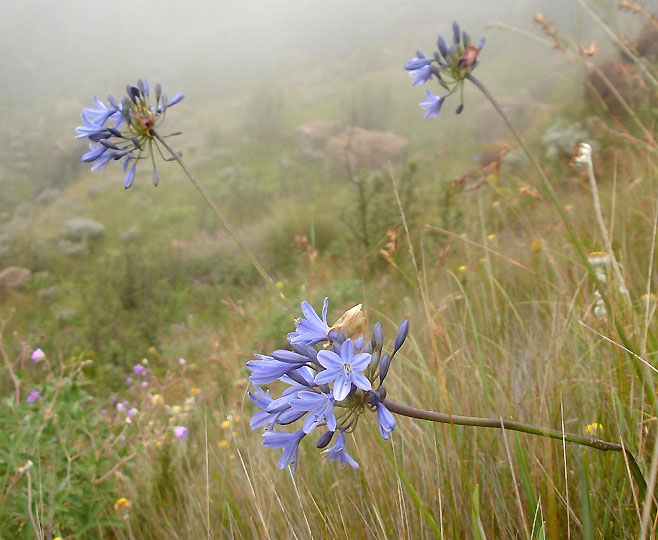Agapanthus campanulatus (Bell
agapanthus)
Life
> eukaryotes >
Archaeoplastida >
Chloroplastida
>
Charophyta > Streptophytina > Plantae (land plants)
> Tracheophyta (vascular plants) > Euphyllophyta > Lignophyta (woody plants)
> Spermatophyta (seed plants) > Angiospermae (flowering
plants)
> Monocotyledons > Order: Asparagales
> Family: Amaryllidaceae > Genus: Agapanthus
 |
|
Agapanthus campanulatus (Bell
agapanthus), Mkhomazi Wilderness area, KwaZulu-Natal, South Africa.
[image Judd Kirkel ©,
iNaturalist] |
Distribution and habitat
Natural distribution includes the northeastern
regions of the Eastern Cape, KwaZulu-Natal, Free State, Gauteng (all
in South Africa) and Lesotho. Occurs in most grassland on rocky
hillsides (Pooley 1998).
Life cycle
- Flowers from December to March (Pooley 1998).
- Flowers are probably pollinated by large bees (e.g.
Xylocopa) but I have not come across any confirmed records
of this.
- The fruit of Agapanthus is a three-angled capsule
containing flat, black winged seeds. Seed dispersal is
presumably mainly by wind?
- Like all summer rainfall Agapanthus, leaves are
deciduous (Leighton 1965), dying back in the cold, dry winters.
Chemistry
See under
Agapanthus.
Uses
As for Chemistry, see under
Agapanthus.
Publications
Text by Hamish Robertson |
